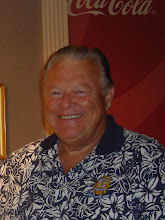So Whose parks are they, anyway?
It appears that Nassau County is creating a new reality when trying to solve the problems of the county park system. They allege that crumbling parks, historic sites and preserves are the result of other administrations (partially true). They imply the government is the “owner” of these properties and can dispose of it at will. They assert that this administration no longer has the resources or experience to manage the park system and therefore its only recourse is to privatize. They leave the impression that privatization will provide better service at the same or reduced costs to the user public. Well they are wrong!
First, the parks, historic sites, museums and preserves were bought, developed and maintained with public monies or in some cases donated to the public. The residents of Nassau County are the “owners” of these facilities; government is merely the trustee. Government’s fiduciary responsibility is to maintain and upgrade all facilities to provide free or low cost public recreation. Funding for that is paid through our real estate taxes. They should only charge fees where an “extra service” is provided, such as seasonal lifeguards at the pools. They are obligated to operate in an efficient, cost effective manner including hiring only qualified personnel, properly supervising them and providing guidelines and rules to insure that the recreational needs of the user public are met. While ancillary non-government services such as food service, golf pro shops, souvenir shops, etc. may be provided by private vendors, government has no moral right to “give away” any public facility or service for which the resident taxpayers have paid and own. To do so is just running away from the problem and an act of cowardice almost equivalent to a deadbeat parent.
We must look back to see how the parks system got into this state. In the mid eighties, the Nassau Park System was one of the finest in the United States with a workforce of about 1,200; it maintained 6,000 acres of parks, preserves, golf courses, museums, tennis courts, boat ramps, aerodromes, a marina, ball fields, camp grounds, beaches, pools, etc, etc. By 1992 the workforce had been allowed to shrink to about 800 and parks were beginning to show the wear and tear of the reduced maintenance program. That year the first financial emergency caused the county to arbitrarily layoff 50% of the employees, most of whom were never hired back. Each year more and more employees were enticed to retire earlier with pension sweeteners culminating in the mass exodus of the current foremen, supervisors and managers in 2002. Thus most of the “institutional knowledge” has left the park system and those who would normally have been groomed to step into those positions were no longer in the system. A recipe for disaster, absolutely, but one the current county administration has also contributed to in its one year of existence.
Privatization is not the answer. This only adds another layer of expense to each park service increasing the cost to the user, the same taxpayer who paid for the service in the first place. Turning over a real estate tax free business to a private operator insures that the individual will milk every dollar out of the operation and make little or no repairs to a facility he does not own. When a major overhaul is required he will either demand the county pay for it or he will walk away and everything goes back to square one except for the financial burden visited upon the park user. Just review the current county contracts for private organizations to operate museums & historic sites and you will see that the county retained most of the cost of these facilities while surrendering any revenue. The public has borne the cost of these misguided ventures. The rush to privatize the Aquatic Center has allowed the county to largely ignore the fact that no true audit of the facility has been made and the losses publicized are not certain. County golf courses are now and always have been “money makers” so where is the rationale in privatizing them? Holding concerts on athletic fields insures their being substantially damaged and the costs of rehabilitation far exceeding the “profit” from the event itself.
The answer is professional and competent park management, properly trained and supervised public employees, a tax funded budget capable of sustaining the system and a fee structure based on any extra or special services provided. That’s how public park systems work throughout the world and Nassau should not be an exception.
So whose parks are they? There are ours, yours and mine and every Nassau County resident’s. Government has no moral right to rent, lease or give them away to any private entity. Administrations come and go and none of them should be permitted to make any decision that alienates us and our public resources to correct a temporary problem, even a financial one such as the county currently faces. Our public parks, preserves, museums and historic sites are part of the legacy we leave future generations and should not be used as pawns in any political game.
Bruce Piel
Chairman
Park Advocacy & Recreation Council of Nassau (PARCnassau)
246 Twin Lane East
Wantagh, NY 11793-1963
516-783-8378

